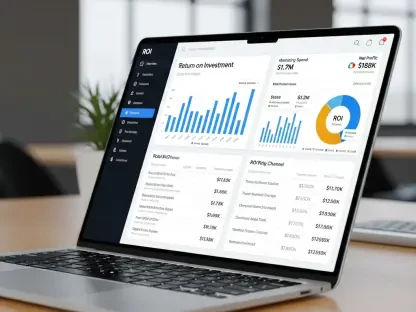Retail businesses in 2025 will rely heavily on advanced Point of Sale (POS) systems to ensure efficient and secure transactions. As technology evolves, the demand for versatile, user-friendly, and robust POS systems is higher than ever. This article delves into the top retail POS systems expected to lead the market, highlighting their features, benefits, and potential drawbacks.
Key Functions of Modern POS Systems
Essential Features for Retail Success
Modern POS systems are designed to handle a variety of payment methods, including NFC, digital wallets, and offline transactions. Ensuring PCI DSS compliance is critical for maintaining security and customer trust. These systems not only process payments but also manage inventory, track sales, and provide detailed analytics to help retailers make informed decisions. The integration of these features is essential, as it enables businesses to streamline operations, reduce human error, and enhance customer satisfaction.
Advanced POS systems now come with cloud-based functionalities, allowing retailers to access data from anywhere and ensure that their data is always backed up. Real-time inventory management is another crucial feature, helping businesses keep track of stock levels, automatically reorder products, and avoid stockouts. Additionally, customizable reporting tools offer insights into sales patterns, customer behavior, and overall business performance, aiding in strategic planning and decision-making. By leveraging these capabilities, modern POS systems become an indispensable tool for growing retail businesses.
Versatility in Payment Handling
Retailers need POS systems that can seamlessly integrate both physical and mobile setups. This versatility allows businesses to operate smoothly in diverse environments, from brick-and-mortar stores to pop-up events. A robust POS system should be able to handle multiple types of transactions, including credit/debit cards, mobile payments, and contactless payments, ensuring a seamless customer experience regardless of the payment method chosen. Beyond payment processing, modern systems facilitate loyalty programs, discounts, and promotional campaigns directly at the point of sale, enhancing customer engagement and retention.
A versatile POS system also supports off-site sales activities, like markets, fairs, or temporary installations. This adaptability ensures business continuity even in scenarios where traditional internet connectivity may be unavailable. For instance, systems like Square offer offline transaction capabilities, which are critical for vendors operating in remote areas with unreliable internet access. Integration with e-commerce platforms is another aspect of versatility, allowing retailers to maintain consistent inventory and sales data across all sales channels, thus providing an omnichannel experience for customers.
Leading POS Systems for Small and Mobile Retailers
Square POS System
Square is a top choice for small and mobile retail businesses due to its flexibility and cost-effectiveness. With no setup or monthly fees and free hardware like the Square POS Reader, it is an attractive option for startups and small enterprises. Square’s appeal lies in its straightforward and intuitive interface that allows even non-tech-savvy users to start using it with minimal training. The system’s compatibility with iOS and Android devices means retailers can use their existing tablets or smartphones to manage their sales, further reducing initial setup costs.
The simplicity of Square does not come at the expense of functionality. It offers a comprehensive suite of features, including inventory management, sales reports, and customer management. Its flexibility extends to integrating with various third-party applications, enabling businesses to customize their POS system according to specific needs. For example, businesses can enhance their POS capabilities by adding employee management tools, customer loyalty programs, or advanced reporting features. This adaptability makes Square a reliable choice for small businesses looking to scale their operations gradually.
Pros and Cons of Square POS
While Square offers easy setup and offline transaction support, its higher transaction fees may become costly for businesses with high volumes of transactions. Retailers need to weigh these factors when considering Square. The lack of monthly fees could be misleading; businesses must carefully evaluate their transaction volumes and the corresponding costs. For instance, a high-volume retailer might find Square’s per-transaction fees accumulating to a significant expense over time, potentially surpassing the cost of other POS systems with lower transaction fees but monthly subscriptions.
Moreover, while Square’s offline capabilities are advantageous, there are limitations in terms of functionality when compared to online modes. Detailed analytics and real-time inventory updates might be restricted, requiring manual synchronization once connectivity is restored. Additionally, Square’s hardware, although free at the entry level, may require upgrades to more advanced devices as business needs grow, which entails additional costs. Despite these cons, for businesses with moderate transaction volumes and a need for flexibility and portability, Square remains an excellent choice due to its ease of use and scalability.
Best POS Systems for Online and Physical Sales Integration
Shopify POS System
Shopify excels in integrating online and physical sales, making it an ideal solution for retailers with significant e-commerce operations. Its user-friendly interface and outstanding customer support are major advantages. This dual capability enables businesses to manage all aspects of their sales from a single platform, reducing the complexity associated with handling separate systems for online and physical transactions. Shopify’s seamless integration ensures that inventory levels are continuously updated across all sales channels, preventing discrepancies that could lead to overselling or stockouts.
The platform is well-regarded for its scalability and customization options. Businesses can start with basic features and gradually adopt more advanced tools as they grow. Shopify’s app store offers a plethora of plugins and integrations to enhance the POS system’s capabilities, from marketing automation and customer relationship management to advanced analytics and reporting. This flexibility allows retailers to tailor their POS system to meet specific business requirements, offering a personalized shopping experience that can drive customer loyalty and repeat sales.
Pros and Cons of Shopify POS
Despite its comprehensive features, Shopify requires additional hardware costs and has limited offline functionality. Businesses must assess whether the benefits outweigh these drawbacks. For example, while the platform’s integration capabilities are robust, they come with an added investment in compatible hardware such as card readers and barcode scanners, thus increasing initial setup costs. Additionally, Shopify POS is typically part of a broader e-commerce subscription plan, meaning higher-tier features require higher monthly fees, which might be impractical for smaller businesses.
Limited offline functionality can be a significant disadvantage for retailers operating in areas with unreliable internet connectivity. In offline mode, transaction capabilities might be restricted, and synchronization with online inventory and sales data can cause operational delays. However, the high level of customer support provided by Shopify, including 24/7 assistance, helps mitigate many potential issues, ensuring a smooth operational experience. In summary, Shopify POS is a powerful tool for businesses with substantial online operations but requires careful consideration of costs and potential offline limitations.
Flexible Solutions for Small Businesses
Small businesses often face unique challenges that require adaptable and efficient solutions. By offering flexible options tailored to their specific needs, small businesses can optimize their operations and achieve sustainable growth. These solutions may include customized software, scalable services, and supportive policies that address the varying demands and constraints of small enterprises.
AirPOS System
AirPOS offers no fixed contracts and a 14-day free trial, making it suitable for small businesses seeking flexibility. Its ability to integrate with popular services adds to its appeal. For small businesses with tight budgets and an evolving sales strategy, the absence of long-term contracts allows more freedom to adapt and change their POS systems as needed without incurring penalties. The initial trial period provides an opportunity to evaluate the system’s compatibility with business operations before committing, thus reducing risks.
AirPOS’s compatibility with various third-party payment providers means that businesses can choose options that offer the most favorable transaction fees or additional features. This flexibility can translate into cost savings over time, especially for startups and micro-enterprises. The user interface, while not the most intuitive in the market, offers a degree of customization that allows businesses to set up their sales processes in a manner that best suits their unique requirements. Integration with services such as PayPal, Stripe, and accounting software like Xero and QuickBooks adds value by streamlining financial management and ensuring seamless operational workflows.
Pros and Cons of AirPOS
AirPOS requires a separate payment provider and lacks 24/7 support, which may be a drawback for some retailers. Additionally, its interface is not as intuitive as some competitors. However, its pay-as-you-go model with a free trial can be very compelling for small retailers looking to test the waters before making a long-term commitment. This flexibility allows small businesses to scale at their own pace and potentially switch providers if a better fit is found without bearing high switching costs.
The absence of around-the-clock support could pose challenges, particularly for businesses operating outside typical business hours or in different time zones. This aspect requires retailers to be more self-sufficient or to seek external support solutions, which could include hiring IT personnel or relying on community forums and self-help resources. Despite these challenges, AirPOS’s strong integration capabilities and no-contract model make it a viable option for small businesses focusing on flexibility and gradual growth.
Customizable POS Solutions for Complex Needs
Lightspeed POS System
Lightspeed stands out for its customizable solutions, catering to businesses with specific operational needs. Its powerful software and hardware options are designed for larger enterprises. The ability to tailor the POS system to address specific requirements makes Lightspeed particularly attractive for retailers with complex operations, such as those in the restaurant, hospitality, or high-end retail industries. Its robust inventory management system allows for detailed cataloging, tracking, and automatic reordering, essential for businesses with large and diverse product ranges.
Lightspeed’s extensive reporting tools offer deep insights into sales trends, employee performance, and customer behavior, enabling businesses to make data-driven decisions. Its hardware options, although more expensive, provide a premium experience with sleek designs and advanced functionalities. These features are especially beneficial for larger enterprises where efficiency, speed, and high-quality service are paramount. Furthermore, Lightspeed integrates smoothly with numerous third-party applications, from accounting and e-commerce platforms to marketing tools, ensuring a cohesive ecosystem that supports various aspects of business operations.
Pros and Cons of Lightspeed POS
Exclusively available on Apple devices, Lightspeed comes with monthly fees and higher costs for customized solutions. Businesses must consider these factors when opting for Lightspeed. The exclusivity with Apple hardware means an upfront investment in high-end devices, which could be a significant expense for businesses not already operating within the Apple ecosystem. However, the benefits of using Apple’s reliable and user-friendly devices often outweigh this initial cost for many businesses. Additionally, the monthly fees, combined with the costs of premium hardware and potential third-party integrations, can add up, making Lightspeed a considerable investment.
Despite the higher costs, the detailed customization and extensive features provided by Lightspeed justify the investment for businesses that need a robust and tailored solution. From detailed employee performance tracking to sophisticated customer relationship management (CRM) capabilities, Lightspeed caters to intricate business needs, enabling larger enterprises to maintain a competitive edge. However, smaller businesses or those with limited budgets may find the high costs prohibitive and might benefit from exploring other cost-effective options.
Feature-Rich POS Systems for Small Businesses
Feature-rich POS systems provide small businesses with a variety of tools to manage sales, track inventory, and streamline operations, enhancing overall efficiency and customer satisfaction. These systems can integrate with accounting software, offer detailed sales reports, and support multiple payment methods, making them invaluable for small business owners looking to optimize their operations.
Helcim POS System
Helcim offers extensive features without monthly fees, making it ideal for small businesses with lower transaction volumes. Its inventory management and sales analytics tools are noteworthy. These features provide a solid foundation for small retailers to manage their stock efficiently and gain insights into sales performance, helping to optimize their operations. Helcim’s transparent pricing model, with no hidden fees or long-term contracts, appeals to small businesses looking to keep operational costs predictable and manageable.
Helcim’s user-friendly interface ensures a smooth transition for businesses new to POS systems, while its robust set of features supports various aspects of retail operations. The system’s ability to handle multiple payment types, including mobile and contactless payments, ensures that customers have a convenient and seamless checkout experience. Additionally, Helcim’s customer relationship management tools help businesses track customer preferences and purchase histories, enabling personalized marketing efforts and improving customer loyalty.
Pros and Cons of Helcim POS
While Helcim is cost-effective for lower-volume transactions, it may be expensive for businesses with high transaction volumes. Retailers need to evaluate their transaction needs before choosing Helcim. The absence of monthly fees is attractive, but the per-transaction fees can become substantial for businesses processing a high volume of sales. This makes Helcim better suited for small retailers or those with steady but moderate sales figures. It’s crucial for businesses to analyze their sales patterns and calculate potential costs to determine if Helcim remains cost-effective as they scale.
Moreover, while Helcim offers a comprehensive set of features, it might lack some of the advanced functionalities provided by other more expensive POS systems. Larger businesses with complex needs may find these limitations restrictive over time. However, for small businesses prioritizing a cost-effective solution with robust basic features, Helcim presents an appealing choice. Its emphasis on ease of use and transparency makes it a trustworthy option for businesses beginning to explore the POS landscape or seeking to transition from outdated systems.
Thematic Analysis of POS Systems
Integration and Versatility
A common theme among the top POS systems is their ability to integrate both online and offline sales. This integration is crucial for retailers operating in multiple environments. By maintaining consistent inventory and sales data across various channels, these systems enable businesses to provide a seamless shopping experience for their customers. For instance, Shopify and Lightspeed excel in this area by merging e-commerce capabilities with physical store operations, ensuring unified management and effortless transitions between online and offline activities.
The ability to synchronize data in real-time across all sales channels minimizes discrepancies and enhances accuracy in reporting and inventory management. This feature is particularly beneficial for retailers with an omnichannel presence, as it enables them to offer services such as buy online, pick up in-store (BOPIS), and seamless returns or exchanges. Robust integration capabilities also ensure that marketing campaigns, loyalty programs, and customer relationship management efforts are consistently applied across all platforms, reinforcing brand loyalty and improving customer satisfaction.
Flexibility and Customizability
Flexibility and customizability are key features, especially for systems like Lightspeed and Square. These systems allow businesses to tailor their POS setup to their specific needs. This adaptability ensures that the POS system can grow and evolve alongside the business, accommodating changes in sales strategies, product offerings, and customer expectations. Lightspeed’s extensive customization options, for example, allow businesses to fine-tune their inventory management, employee tracking, and customer engagement tools to align perfectly with their operational requirements.
Such flexibility ensures that businesses are not constrained by rigid workflows or limited functionalities, enabling them to maintain competitive agility. Customizable features also allow businesses to differentiate themselves in the market by offering unique experiences or services not commonly available through standard POS setups. Moreover, integrating with a variety of third-party applications allows businesses to extend the capabilities of their POS system, adding modules for advanced reporting, specialized marketing campaigns, or detailed customer analytics as needed.
Cost-Effectiveness and Support
Balancing Costs and Features
Retailers must balance the cost structures of different POS systems with their features. Systems like Square and Helcim avoid monthly fees but charge higher transaction fees, while Shopify and Lightspeed have subscription models. This diverse range of pricing models requires careful consideration of a business’s transaction volumes, operational needs, and budget. For example, a startup with limited capital might benefit from Square’s no monthly fees, whereas a larger enterprise with higher transaction volumes might find Shopify or Lightspeed’s subscription model more cost-effective in the long run due to lower transaction fees.
Additionally, businesses should consider the total cost of ownership, including hardware expenses, potential fees for third-party integrations, and costs for additional features or advanced functionalities. Evaluating these factors holistically helps ensure that the chosen POS system provides the best value for money. Cost-effectiveness is not just about minimizing expenses but optimizing the balance between cost and operational efficiency, ensuring the POS system contributes positively to overall business growth and profitability.
Emphasis on Usability and Support
Retail businesses in 2025 are set to rely extensively on advanced Point of Sale (POS) systems to facilitate efficient and secure transactions. As technology continues to advance, there is an increasing demand for POS systems that are not only versatile but also user-friendly and robust. Retailers are looking for solutions that can handle various payment methods, integrate seamlessly with inventory management, and provide insightful analytics.
This article explores the top retail POS systems expected to dominate the market by highlighting their key features, such as speed of operation, ease of use, and security measures. Additionally, we will discuss the benefits these systems offer, including improved customer experience, streamlined operations, and enhanced data management. Furthermore, potential drawbacks will be examined, such as cost considerations and compatibility issues with existing hardware or software.
In the rapidly evolving retail landscape, POS systems are becoming critical tools that help businesses stay competitive. They support everything from inventory tracking to customer relationship management, offering retailers the ability to deliver a seamless shopping experience. As we move toward 2025, keeping abreast of advancements in POS technology will be crucial for retailers aiming to meet consumer expectations and improve their operational efficiency. With the market poised for growth, selecting the right POS system could be a game changer for businesses aiming to thrive in the future.









